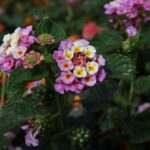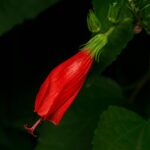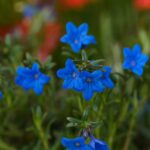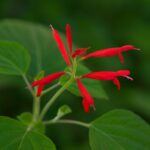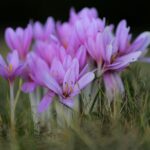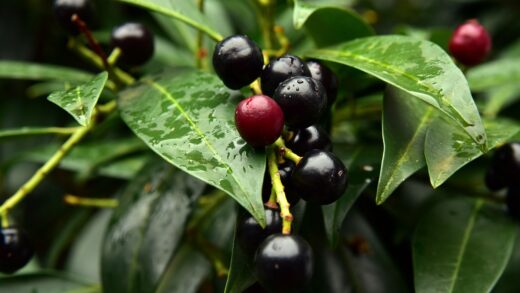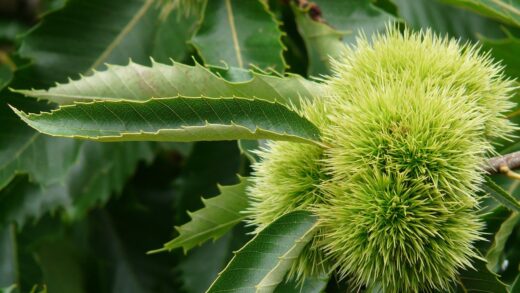While the Chinese empress tree is generally considered a robust and resilient species, it is not immune to problems from diseases and pests. Like any plant, its health can be compromised by various pathogens and insects, particularly if the tree is stressed by unfavorable growing conditions such as poor drainage, drought, or nutrient deficiencies. Proactive monitoring and the implementation of good cultural practices are the cornerstones of disease and pest management, helping to ensure that the tree remains a healthy and vibrant feature in the landscape. Recognizing the early signs of trouble allows for timely intervention, which can prevent minor issues from escalating into serious threats to the tree’s vitality.
The most effective strategy for preventing disease and pest problems is to maintain optimal tree health. A vigorous, well-cared-for tree is inherently more capable of resisting and recovering from attacks than a stressed one. This begins with proper site selection, ensuring the tree is planted in a location with full sun and well-drained soil. Overly wet or compacted soils are a primary contributor to root rot diseases, one of the most significant threats to Paulownia. Providing adequate water during establishment and dry periods, along with a balanced fertilization program, builds the tree’s natural defenses.
Regular inspection of your empress tree is a critical component of integrated pest management (IPM). At least a few times during the growing season, take the time to walk around the tree and look closely at its trunk, branches, and leaves. Check for any unusual signs, such as discolored or distorted leaves, holes or chewing damage, sticky residues, sawdust-like frass, or fungal growths on the bark. Early detection is key, as it is much easier to control a small, localized pest infestation or the initial stages of a disease than a widespread problem.
When a problem is identified, it is important to accurately identify the cause before taking action. Different pests and diseases require different control strategies, and using the wrong treatment can be ineffective or even harmful to the tree and the surrounding environment. If you are unsure of the cause, you can take photos or a sample of the affected part to a local horticultural extension service or a knowledgeable nursery professional for assistance. This will enable you to choose the most appropriate and least toxic management approach, focusing on cultural and biological controls before resorting to chemical pesticides.
Common fungal diseases
Fungal diseases are among the most common issues that can affect the Chinese empress tree, often thriving in damp, humid conditions. One of the most prevalent is powdery mildew, which appears as a white or grayish powdery coating on the surface of the leaves and young stems. While it is usually more of a cosmetic issue and rarely causes severe harm to a mature tree, a heavy infestation can reduce photosynthesis and stress the plant, especially young saplings. Improving air circulation by properly spacing plants and selective pruning can significantly reduce its incidence.
A more serious threat is root rot, typically caused by soil-borne fungi such as Phytophthora. This disease attacks the root system, causing it to decay and lose its ability to absorb water and nutrients. The above-ground symptoms can be subtle at first, including wilting, yellowing leaves, and a general decline in vigor, which can easily be mistaken for drought stress. Root rot is almost always linked to poor drainage and waterlogged soil conditions. Prevention through proper site selection and soil amendment is the only effective cure, as the disease is very difficult to treat once the tree is infected.
Leaf spot diseases, caused by various types of fungi, can also affect the empress tree. These appear as distinct spots or blotches on the leaves, which may be brown, black, or tan, sometimes with a yellow halo. While a minor infection is unlikely to harm the tree, severe cases can lead to premature leaf drop, which can reduce the tree’s energy reserves if it occurs repeatedly over several years. Good sanitation practices, such as raking up and disposing of fallen leaves in the autumn, can help reduce the amount of fungal spores that can overwinter and re-infect the tree the following spring.
Cankers are another potential issue, appearing as sunken, dead areas on the trunk or branches, often caused by fungal pathogens that enter the tree through wounds. These can girdle the branch or trunk, cutting off the flow of water and nutrients and killing the parts of the tree above the canker. The best prevention is to avoid wounding the tree with lawnmowers or string trimmers and to use proper pruning techniques to make clean cuts that heal quickly. If a canker is found on a branch, the affected branch should be pruned off well below the cankered area to remove the infected tissue.
Identifying and managing insect pests
The empress tree can play host to a number of insect pests, although severe infestations are relatively uncommon on healthy trees. Sap-sucking insects such as aphids and scale insects are among the most frequent visitors. Aphids are small, pear-shaped insects that often congregate on the undersides of new leaves and tender shoots, feeding on the plant’s sap. Scale insects appear as small, immobile bumps on the stems and leaves, protecting themselves under a waxy shell while they feed. Both can cause yellowing and distortion of leaves and produce a sticky substance called honeydew, which can lead to the growth of sooty mold.
For small infestations of these pests, a strong jet of water from a hose can be effective at dislodging them from the tree. For more persistent problems, insecticidal soaps or horticultural oils can be used. These are contact insecticides that are effective against soft-bodied insects and have a lower impact on beneficial insects compared to broad-spectrum chemical pesticides. It is important to ensure thorough coverage, especially on the undersides of leaves where these pests like to hide. Encouraging natural predators like ladybugs, lacewings, and parasitic wasps by planting a diverse range of flowering plants can also provide excellent long-term biological control.
Wood-boring insects can pose a more serious threat, as they tunnel into the trunk and branches of the tree. The larvae of certain beetles and moths can cause significant structural damage by feeding on the living tissue just beneath the bark, disrupting the transport of water and nutrients. Evidence of borers includes small holes in the bark, sawdust-like frass being pushed out of the holes, and localized dead areas on the trunk. Borers typically attack trees that are already stressed or weakened, so maintaining tree vigor is the best defense. Once borers are established within the tree, control is very difficult.
Another pest to be aware of is the caterpillar of various moth species, which can feed on the leaves of the empress tree. While a small amount of chewing damage is usually not a cause for concern, a large population of caterpillars can defoliate parts of the tree. In most cases, natural predators such as birds will help keep their numbers in check. If an outbreak becomes severe, products containing Bacillus thuringiensis (Bt), a naturally occurring bacterium that is toxic only to caterpillars, can be a highly effective and environmentally safe control option.
Environmental and abiotic problems
Not all problems affecting the empress tree are caused by living organisms. Abiotic disorders, which are caused by non-living, environmental factors, are also common and can significantly impact the tree’s health. One of the most frequent issues is sunscald, which occurs in winter when the low-hanging sun warms the south- or southwest-facing side of a young tree’s trunk during the day. This can cause the dormant cells to become active, and when the temperature plummets after sunset, these active cells are killed, resulting in dead, discolored, and sunken patches of bark. Wrapping the trunks of young trees with a light-colored tree wrap for the winter is the most effective way to prevent this.
Frost damage is another significant concern, especially for young trees and in climates that are at the colder end of the tree’s hardiness range. A late spring frost can kill the new, tender leaves and flower buds, ruining the spring display for that year. While this is usually not fatal to an established tree, which will produce a new flush of leaves, it can be a major setback for a young sapling. To minimize risk, avoid planting the tree in low-lying frost pockets where cold air settles, and if a late frost is forecast, you can try to cover a small, young tree with a blanket or cloth overnight.
Nutrient deficiencies, as discussed previously, are a form of abiotic disorder that can cause a range of symptoms, from yellowing leaves to stunted growth. These are often linked to the soil’s pH, which can make essential minerals unavailable to the tree. Conversely, an excess of certain minerals or salts in the soil, often caused by over-fertilization or road salt runoff, can create a toxic environment for the roots, leading to leaf scorch, where the edges of the leaves turn brown and appear burnt. A soil test is the best tool for diagnosing and addressing these soil-related issues.
Mechanical damage is a common and entirely preventable abiotic problem. Wounds created by lawnmowers, string trimmers, or improper pruning create entry points for disease-causing pathogens and wood-boring insects. These injuries can also directly damage the cambium layer beneath the bark, disrupting the tree’s vascular system. Creating a wide mulch ring around the base of the tree is the simplest way to keep lawn equipment at a safe distance from the trunk. Careful handling and proper pruning techniques will further protect the tree from unnecessary physical injury throughout its life.
Integrated pest management (IPM) strategies
Integrated Pest Management, or IPM, is a holistic and environmentally sensitive approach to managing pests and diseases. It emphasizes the use of a combination of common-sense practices rather than relying solely on chemical pesticides as a first resort. The foundation of IPM for the empress tree is prevention. This involves selecting a genetically strong plant, placing it in an ideal growing location, and maintaining its health and vigor through proper watering, mulching, and nutrition. A healthy tree is far less likely to succumb to problems in the first place.
Regular monitoring is the next key component of an IPM program. By frequently inspecting your tree, you can identify potential issues when they are still minor and easily manageable. This allows for early intervention using the least toxic methods available. For example, if you spot a small aphid colony, you can simply prune off the affected shoot or wash them off with water, rather than waiting until the entire tree is infested and feeling that a chemical spray is the only option. Keeping records of what you find and when can also help you anticipate and prevent problems in future years.
IPM promotes the use of a hierarchy of control methods. The first line of defense is cultural controls, which are the good horticultural practices that reduce pest and disease establishment, such as ensuring good air circulation, proper sanitation (e.g., cleaning up fallen leaves), and rotating crops in a vegetable garden context. Physical or mechanical controls are next, such as hand-picking caterpillars, using traps, or creating barriers. Biological control, which involves using natural enemies like predators and parasitoids to control pests, is another crucial and highly effective IPM strategy.
Chemical controls, particularly synthetic pesticides, are used only as a last resort in an IPM framework, and when they are used, the most selective and least toxic option is chosen. The goal is to target the specific pest while minimizing harm to non-target organisms, including beneficial insects, wildlife, and humans. By adopting an IPM approach, you can effectively manage the health of your Chinese empress tree in a way that is sustainable, environmentally responsible, and promotes a balanced and healthy garden ecosystem.









